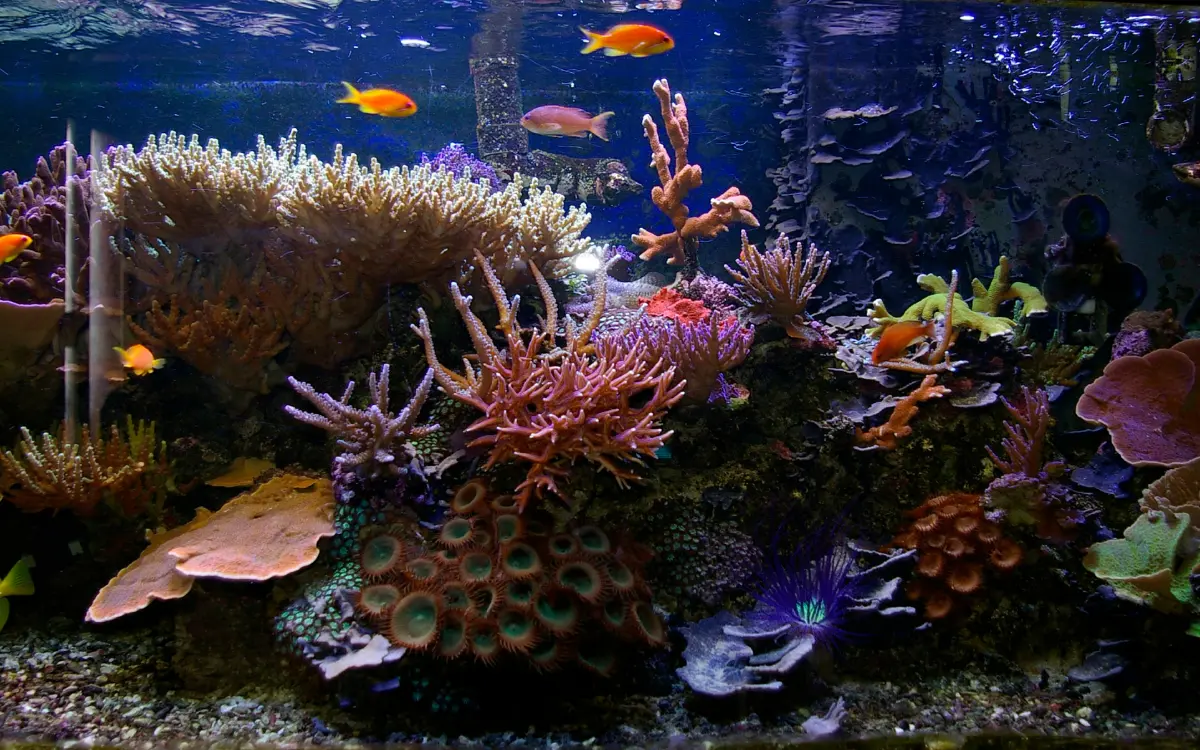Transform your home with the beauty of saltwater aquariums. Discover colorful fish and corals, and learn how to set up and maintain a stunning underwater world. Ready to create your ocean paradise?
Step-by-Step Guide to Setting Up a Saltwater Aquarium
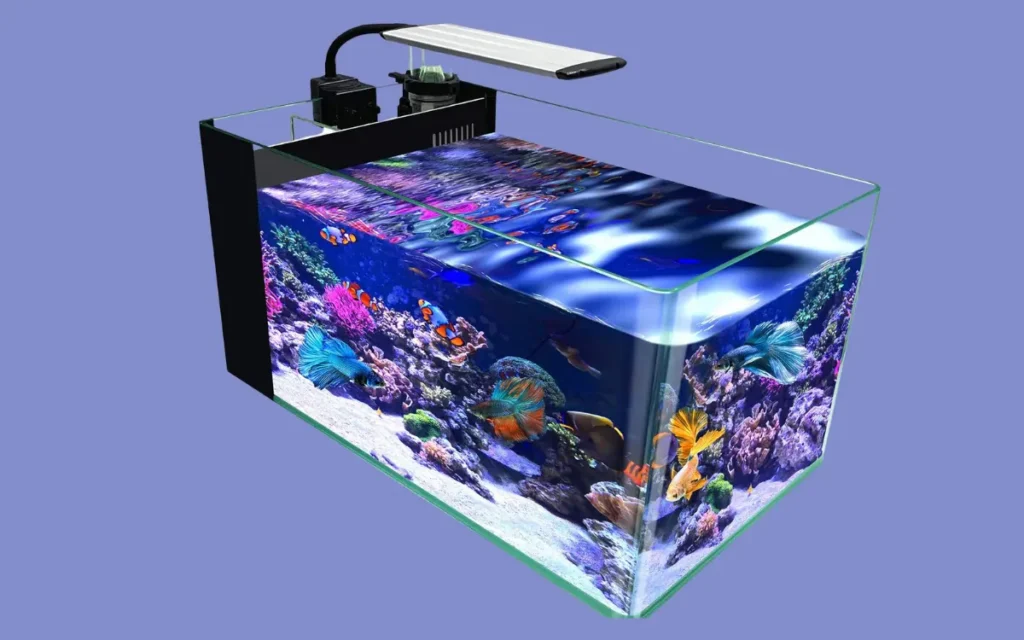
- Choose the Right Tank Size: Start with a tank that is at least 30 gallons, as larger tanks are more stable and easier to maintain.
- Select a Suitable Location: Place the tank away from direct sunlight and high-traffic areas to reduce stress on the fish.
- Install the Equipment: Set up your filter, heater, and lighting system according to the manufacturer’s instructions.
- Add Substrate and Decorations: Use marine-specific substrate and add live rock or artificial decorations to provide hiding spots and a natural environment.
- Fill with Saltwater: Mix marine salt with dechlorinated water to create the appropriate salinity level, typically around 1.020 to 1.025 specific gravity.
- Cycle the Tank: Allow the tank to cycle for 4-6 weeks, monitoring ammonia, nitrite, and nitrate levels to establish beneficial bacteria.
- Introduce Livestock Slowly: Start with hardy fish and invertebrates, adding them gradually to avoid overwhelming the biological filtration system.
Equipment Needed
- Tank: A sturdy glass or acrylic tank with a secure lid.
- Filter: A high-quality filtration system, such as a hang-on-back, canister, or sump filter.
- Heater: An adjustable heater to maintain a stable temperature, usually between 75-82°F.
- Lighting: LED or T5 lights are designed for marine aquariums to support coral growth and enhance fish colors.
- Protein Skimmer: Optional but recommended for removing organic waste.
- Powerhead: To ensure adequate water circulation and oxygenation.
- Marine Salt Mix: Specifically formulated salt for creating saltwater.
- Hydrometer or Refractometer: For measuring salinity levels.
- Test Kits: For monitoring ammonia, nitrite, nitrate, pH, and other water parameters.
Importance of Water Quality and Parameters
Maintaining optimal water quality is crucial for the health of your saltwater aquarium. Regularly test and adjust the following parameters:
- Salinity: Keep it between 1.020 and 1.025 specific gravity.
- Temperature: Maintain a stable range of 75-82°F.
- pH: Aim for a pH level between 8.1 and 8.4.
- Ammonia, Nitrite, Nitrate: Ammonia and nitrite should be at 0 ppm; nitrate should be below 20 ppm.
- Calcium, Alkalinity, and Magnesium: Essential for coral growth; maintain appropriate levels based on the specific needs of your livestock.
All-in-One Saltwater Aquarium Kits
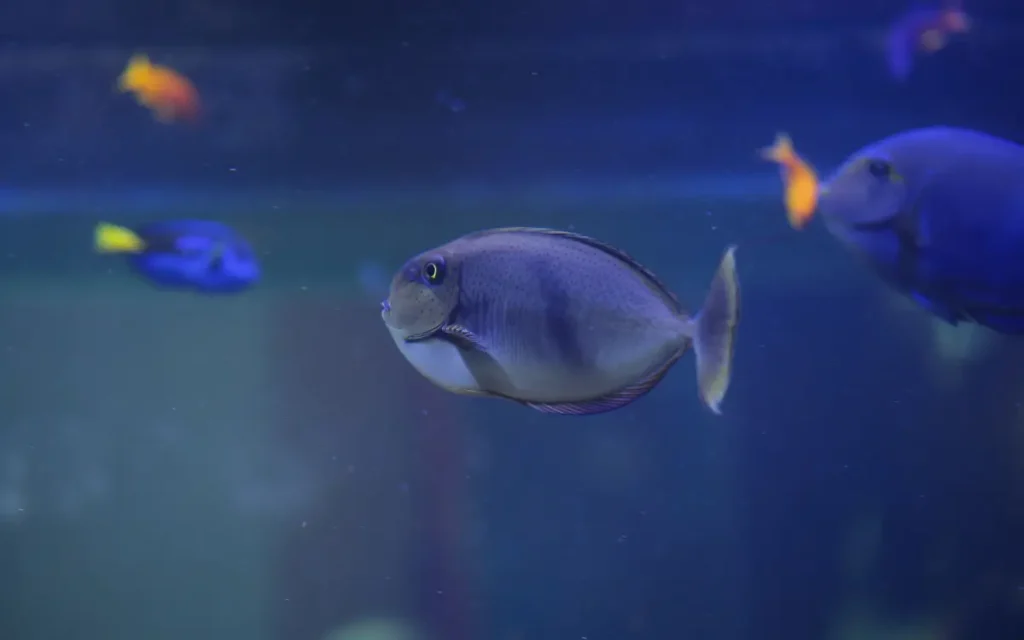
Advantages and Disadvantages of All-in-One Kits
Advantages:
- Ease of Use: All-in-one kits come with pre-selected equipment, making setup straightforward for beginners.
- Compact Design: These kits are often designed to be space-efficient, making them ideal for smaller spaces.
- Aesthetically Pleasing: They usually have a sleek, integrated look, with all components designed to work together seamlessly.
- Cost-Effective: Purchasing an all-in-one kit can be more economical than buying each component separately.
Disadvantages:
- Limited Customization: All-in-one kits offer fewer options for upgrading or customizing equipment.
- Potential for Lower Quality Components: Some kits may include basic equipment that might not be as high-quality or durable as separately purchased items.
- Size Restrictions: Many all-in-one kits are on the smaller side, which can limit the types and number of marine life you can keep.
- Maintenance Challenges: Integrated designs can sometimes make maintenance and repairs more complicated.
Popular All-in-One Kits Available on the Market
- Fluval Sea EVO XII
- Size: 13.5 gallons
- Features: High-output LED lighting, efficient 3-stage filtration system
- Best For: Beginners and small spaces
- Coralife LED Biocube
- Size: Available in 16 and 32-gallons
- Features: Integrated 24-hour timer, compact and customizable filtration system
- Best For: Intermediate hobbyists looking for a versatile and expandable system
- Red Sea MAX NANO
- Size: 20 gallons
- Features: REEF-SPEC filtration and circulation, LED lighting, easy-access front sump
- Best For: Serious hobbyists seeking high performance in a compact design
- Innovative Marine Nuvo Fusion
- Size: Ranges from 10 to 40 gallons
- Features: Fusion AIO design, customizable filtration, advanced LED lighting options
- Best For: Advanced hobbyists wanting a balance of design and functionality
Considerations for Choosing the Right Kit
- Tank Size: Determine the space available in your home and the types of marine life you want to keep. Larger tanks provide more stability and options but require more space and maintenance.
- Included Equipment: Check the quality and specifications of the included components, such as the filtration system, lighting, and heater. Ensure they meet the needs of your intended setup.
- Ease of Maintenance: Consider how easy it is to access and maintain the tank and its components. Look for kits with user-friendly features and accessible filtration systems.
- Expandability: Think about future upgrades. Some all-in-one kits offer more flexibility for adding advanced equipment or customizing the setup.
- Budget: Compare the overall cost of the kit to buying components separately. Ensure the kit offers good value for the price without compromising on essential features.
- Brand Reputation: Research reviews and feedback from other hobbyists. Reputable brands with positive reviews are more likely to provide reliable and durable products.
Read also:
- Brackish Water Aquariums: Setup And Species
- Aquarium Sizes And Shapes: Choosing The Right Tank For Your Needs
- Theme-Based Aquariums: Showcase, Breeding, And Quarantine Setups
Types of Saltwater Aquariums
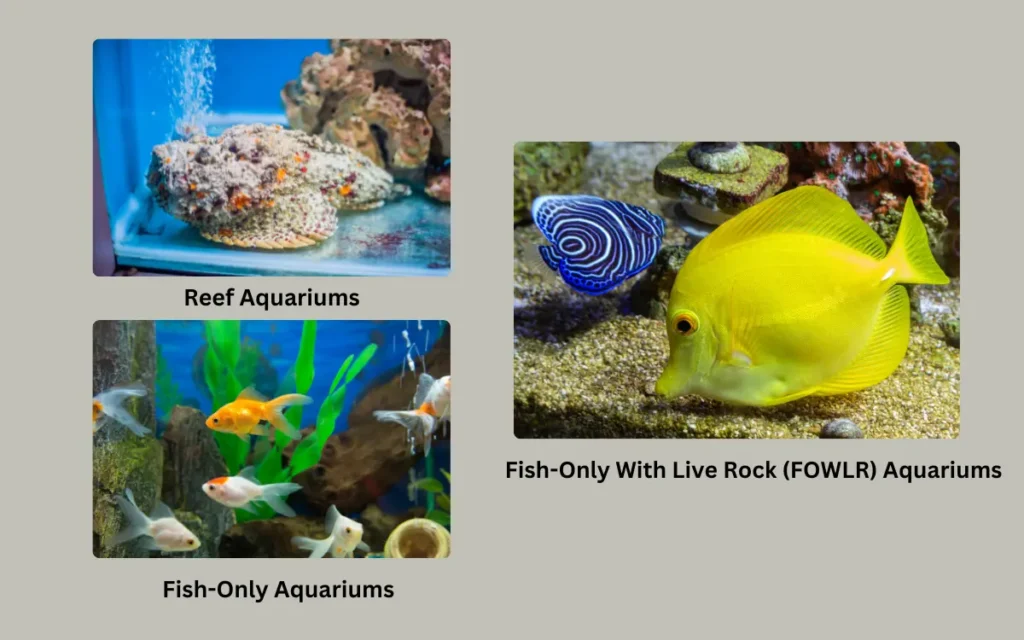
1.Reef Aquariums
Description: Reef aquariums are vibrant, living displays that replicate natural coral reef environments. They house a mix of corals, invertebrates, and reef-safe fish, creating a dynamic and colorful underwater scene.
Key Features:
- Coral Varieties: Soft corals, hard corals (SPS and LPS), and various anemones.
- Invertebrates: Shrimp, crabs, snails, and other reef-dwelling species.
- Fish: Only reef-safe species to avoid damage to corals.
Requirements:
- High-Quality Lighting: LED or T5 lights that support coral growth.
- Stable Water Parameters: Strict monitoring of salinity, pH, calcium, alkalinity, and magnesium.
- Efficient Filtration and Flow: Protein skimmers, live rock, and powerheads for water movement.
- Regular Maintenance: Frequent water changes, parameter testing, and dosing of supplements for oral health.
Ideal For: Experienced aquarists who can commit to the care and maintenance needed to keep corals healthy and thriving.
2.Fish-Only Aquariums
Description: Fish-only aquariums focus solely on marine fish, without the inclusion of corals or extensive invertebrates. These setups allow for a diverse and colorful array of fish species, including those that are not reef-safe.
Key Features:
- Marine Fish: A wide variety of species, including larger and more aggressive fish not suitable for reef tanks.
- Decorations: Artificial reefs, rocks, and other decorations to create hiding spots and territories.
Requirements:
- Basic Lighting: Standard aquarium lights suitable for viewing fish.
- Robust Filtration: Canister filters, hang-on-back filters, or sumps to maintain water quality.
- Water Quality Maintenance: Regular water changes and monitoring of basic parameters like salinity and pH.
Ideal For: Beginners and aquarists who prefer a simpler setup with fewer maintenance demands compared to reef tanks.
3.Fish-Only with Live Rock (FOWLR) Aquariums
Description: FOWLR aquariums combine the simplicity of fish-only setups with the biological benefits of live rock. Live rock provides natural filtration, hiding spots, and a more natural look while allowing for a diverse range of fish.
Key Features:
- Live Rock: Porous rocks that host beneficial bacteria and microorganisms.
- Marine Fish: Similar variety to fish-only tanks, including non-reef-safe species.
- Natural Aesthetic: The inclusion of live rock enhances the visual appeal and biological stability.
Requirements:
- Moderate Lighting: Sufficient for fish viewing and live rock maintenance.
- Filtration and Water Flow: Protein skimmers, powerheads, and other filtration methods to support the biological load.
- Stable Water Parameters: Regular testing and maintenance of salinity, pH, and basic water quality parameters.
Ideal For: Aquarists who want a natural-looking aquarium with the added benefits of live rock’s biological filtration, without the complexity of maintaining corals.
Saltwater Aquarium Care

Daily Tasks:
- Check Water Temperature: Ensure the tank temperature is stable and within the optimal range (75-82°F).
- Inspect Equipment: Verify that all equipment, such as filters, heaters, and lights, are functioning properly.
- Feed Fish: Provide appropriate food for your fish and invertebrates, ensuring not overfeed.
- Observe Livestock: Monitor fish and corals for any signs of stress, disease, or unusual behavior.
Weekly Tasks:
- Test Water Parameters: Check salinity, pH, ammonia, nitrite, nitrate, and other vital parameters to ensure they are within acceptable ranges.
- Perform Water Changes: Replace 10-20% of the tank water with freshly mixed saltwater to maintain water quality and remove waste.
- Clean the Tank: Remove any algae buildup on the glass, decorations, and equipment using an algae scraper or magnet cleaner.
- Inspect Live Rock and Corals: Look for any signs of pests or diseases on live rock and corals, and address any issues promptly.
Monthly Tasks:
- Deep Clean Equipment: Thoroughly clean filters, protein skimmers, and powerheads to remove any accumulated debris and ensure efficient operation.
- Replace Filter Media: Change out any chemical filter media, such as activated carbon or phosphate removers, as needed.
- Check and Replenish Supplies: Ensure you have adequate supplies of test kits, salt mix, and other essential items.
- Inspect Livestock Growth and Health: Evaluate the growth and health of your fish and corals, and make any necessary adjustments to their care routines.
Common Issues and Troubleshooting
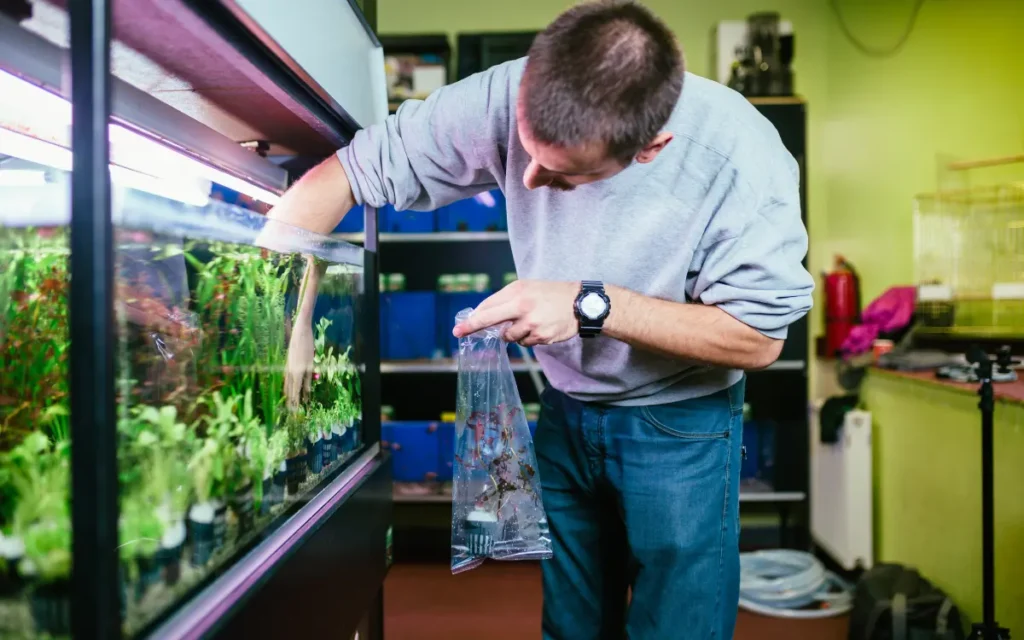
- Algae Overgrowth:
- Cause: Excess nutrients, improper lighting, or insufficient water changes.
- Solution: Reduce feeding, increase water changes, adjust lighting schedule, and consider adding algae-eating livestock.
- Fish Disease:
- Cause: Poor water quality, stress, or introduction of infected livestock.
- Solution: Quarantine new additions, maintain optimal water conditions, and use appropriate medications as needed.
- Coral Bleaching:
- Cause: Sudden changes in water parameters, inadequate lighting, or high temperatures.
- Solution: Stabilize water parameters, adjust lighting intensity, and ensure proper temperature control.
- Equipment Malfunction:
- Cause: Wear and tear, power outages, or improper maintenance.
- Solution: Regularly inspect and maintain equipment, have backup power sources, and keep spare parts on hand.
Tips for Keeping the Aquarium Healthy
- Maintain Stable Water Parameters: Consistency is key in saltwater aquariums. Regularly test and adjust water parameters to avoid sudden changes that can stress fish and corals.
- Practice Good Hygiene: Always wash your hands before and after handling aquarium equipment and avoid introducing contaminants into the tank.
- Quarantine New Additions: Quarantine new fish and invertebrates for at least two weeks before adding them to the main tank to prevent the spread of diseases.
- Provide Proper Nutrition: Feed a varied diet appropriate for your livestock, including high-quality pellets, flakes, frozen, and live foods.
- Create a Natural Environment: Use live rock, sand, and appropriate decorations to mimic the natural habitat of your marine life, providing them with hiding spots and reducing stress.
- Stay Informed: Continuously educate yourself about the needs of your specific aquarium inhabitants and stay updated with the latest best practices in saltwater aquarium care.
Saltwater Aquarium vs Freshwater Aquarium
| Aspect | Saltwater Aquarium | Freshwater Aquarium |
| Setup Complexity | More complex setup requiring precise water chemistry | Easier setup with less stringent water parameters |
| Initial Cost | Higher initial cost due to specialized equipment and salt mix | Lower initial cost with readily available equipment |
| Maintenance | Requires frequent monitoring and maintenance | Generally less maintenance-intensive |
| Water Parameters | Requires specific salinity, pH, and mineral levels | More forgiving water parameters |
| Fish and Livestock | Wide variety of colorful and unique marine species | Wide variety of freshwater fish species, often less colorful |
| Aquascaping Options | Includes live rock, corals, and marine plants | Includes plants, rocks, and driftwood |
| Lighting Requirements | High-intensity lighting for corals | Standard aquarium lighting for plants and fish |
| Filtration Needs | Advanced filtration systems like protein skimmers | Standard filters (canister, sponge, hang-on-back) |
| Environmental Stability | More sensitive to changes in water parameters | More stable and resilient environment |
| Biodiversity | Greater biodiversity with marine invertebrates and corals | Less biodiversity compared to saltwater setups |
| Lifespan of Livestock | Generally longer lifespan for marine fish | Varies widely depending on species |
| Availability of Supplies | Specialized supplies needed, often found in specialty stores | Readily available supplies in most pet stores |
| Educational Value | Offers insights into complex marine ecosystems | Provides learning about diverse freshwater habitats |
Pros and Cons of Each Type
| Type | Pros | Cons |
| Saltwater Aquarium | – Stunning visual appeal with vibrant colors | – Higher initial and ongoing costs |
| – Wide range of unique and exotic species | – Requires precise water chemistry and more maintenance | |
| – Educational and rewarding for experienced aquarists | – Sensitive to changes, requiring more attention to detail | |
| Freshwater Aquarium | – Easier and cheaper to set up and maintain | – Fewer colorful and exotic species compared to saltwater |
| – More forgiving and stable environment | – Less biodiversity and complexity | |
| – Ideal for beginners and those with limited time | – Can be less visually striking without advanced aquascaping |
Which is Better for Different Types of Aquarists
| Aquarist Type | Recommended Aquarium | Reason |
| Beginners | Freshwater Aquarium | Easier to set up and maintain, more forgiving with water parameters |
| Experienced Hobbyists | Saltwater Aquarium | Offers a more challenging and rewarding experience, with stunning marine life |
| Budget-Conscious | Freshwater Aquarium | Lower initial and ongoing costs, readily available supplies |
| Time-Constrained | Freshwater Aquarium | Requires less frequent maintenance and monitoring |
| Education Enthusiasts | Saltwater Aquarium | Provides deeper insights into marine biology and complex ecosystems |
Saltwater Aquarium Tank Sumps
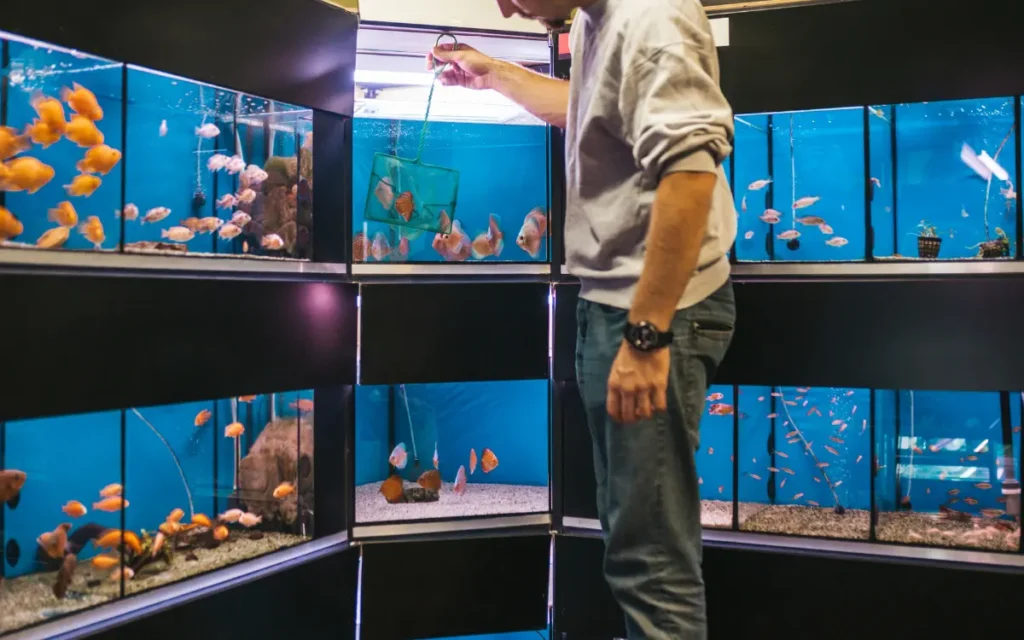
Purpose and Benefits of Using a Sump
Purpose:
- Filtration: Sumps provide a space to house various filtration components, such as protein skimmers, heaters, and filter socks, away from the main display tank.
- Water Volume: Increasing the overall water volume of the system, helps in stabilizing water parameters and improving the tank’s ecosystem.
- Hiding Equipment: Keeps unsightly equipment out of the main display tank, maintaining a cleaner and more natural aesthetic.
- Additional Refugium: This can serve as a refugium for growing macroalgae and housing beneficial microorganisms, which aid in nutrient export and maintaining water quality.
Benefits:
- Improved Filtration: Sumps allow for more efficient mechanical, chemical, and biological filtration.
- Enhanced Water Quality: By increasing the water volume, sumps help maintain more stable water parameters.
- Flexibility and Customization: Sumps offers space to add various types of equipment and customize the filtration system according to the tank’s needs.
- Increased Oxygenation: Enhances gas exchange, which improves the oxygen levels in the tank.
- Easier Maintenance: Provides easy access to equipment for maintenance and adjustments without disturbing the main display tank.
How to Set Up and Maintain a Sump
Setting Up a Sump:
- Choose the Right Sump: Select a sump that fits your tank’s size and meets your specific needs. Common sump sizes range from 10 to 50 gallons or more.
- Install Baffles: Baffles create separate compartments within the sump for different filtration stages. Typically, there are sections for mechanical filtration, the protein skimmer, and the return pump.
- Connect the Overflow: Install an overflow system in the main tank to drain water into the sump. Ensure the overflow rate matches the sump’s capacity.
- Set Up Filtration Components: Place mechanical filters (e.g., filter socks), protein skimmers, and heaters in their designated compartments.
- Add a Return Pump: Install a return pump in the last compartment to pump the water back into the main tank. Ensure the pump’s flow rate matches the overflow rate.
- Test for Leaks: Fill the sump with water and run the system to check for leaks and ensure everything is functioning properly.
- Fine-Tune Water Levels: Adjust the water levels in each sump compartment to ensure efficient operation and prevent overflow.
Maintaining a Sump:
- Regular Cleaning: Clean filter socks or other mechanical filters weekly to prevent clogging and maintain filtration efficiency.
- Check Equipment: Inspect all equipment, such as the protein skimmer and return pump, regularly to ensure they are working correctly.
- Monitor Water Levels: Keep an eye on water levels to avoid running the return pump dry or causing overflow.
- Replace Media: Change chemical filter media, such as activated carbon or phosphate removers, as needed to maintain water quality.
- Algae Control: If using a refugium, trim macroalgae regularly to prevent overgrowth and maintain nutrient export efficiency.
Different Types of Sumps
- Standard Sump:
- Description: Basic design with separate compartments for mechanical, chemical, and biological filtration.
- Best For: General use in a variety of saltwater aquarium setups.
- Refugium Sump:
- Description: Includes a dedicated section for a refugium, which can house macroalgae and live sand or rock to aid in nutrient export.
- Best For: Aquarists looking to enhance biological filtration and create a more natural ecosystem.
- Custom-Built Sump:
- Description: Tailored to the specific needs of the aquarist, with custom baffle placement and compartments.
- Best For: Advanced hobbyists with specific requirements or unique setups.
- Modular Sump:
- Description: Features removable and adjustable compartments for flexible customization.
- Best For: Aquarists who want the ability to easily modify their filtration system as needed.
- In-Sump Protein Skimmer Sump:
- Description: Designed specifically to house an in-sump protein skimmer, optimizing space and efficiency.
- Best For: Tanks with high bioloads that require robust protein skimming.
Saltwater Fish
Popular Species for Saltwater Aquariums
1. Clownfish (Amphiprioninae)
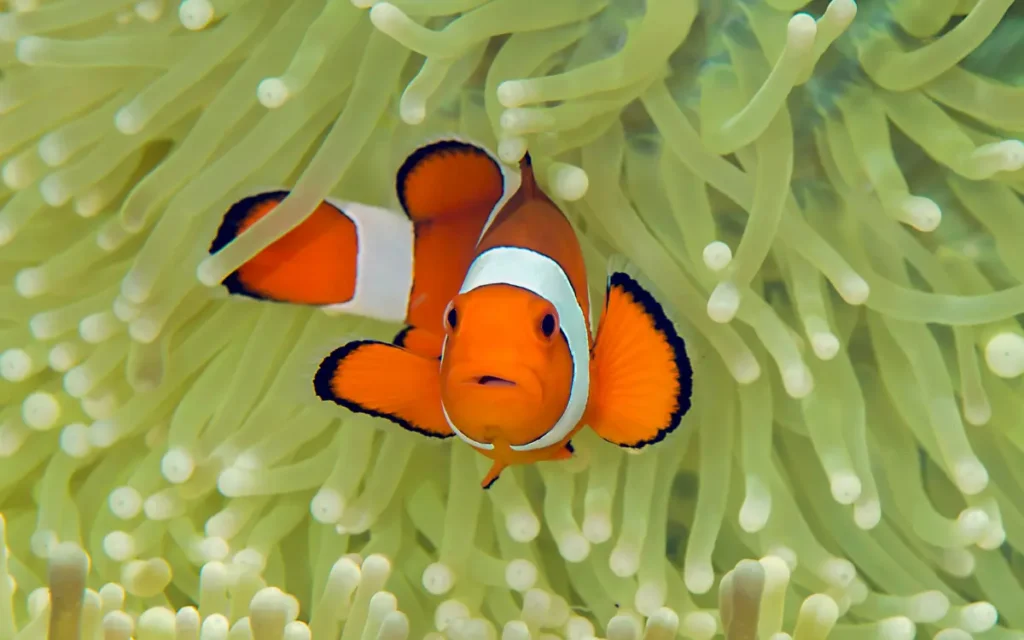
- Description: Known for their vibrant orange and white stripes, clownfish are hardy and relatively easy to care for.
- Popular Varieties: Ocellaris Clownfish, Percula Clownfish
2. Blue Tang (Paracanthurus hepatus)
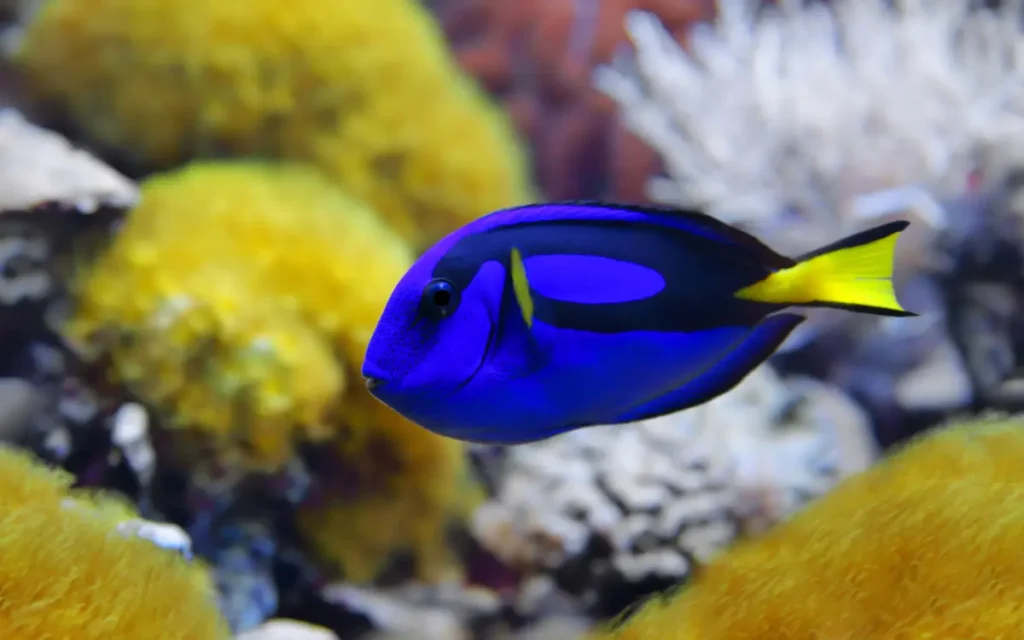
- Description: Famous from the movie “Finding Nemo,” the Blue Tang is known for its striking blue and yellow coloration.
- Care Level: Moderate; requires a large tank and good water quality.
3. Yellow Tang (Zebrasoma flavescens)
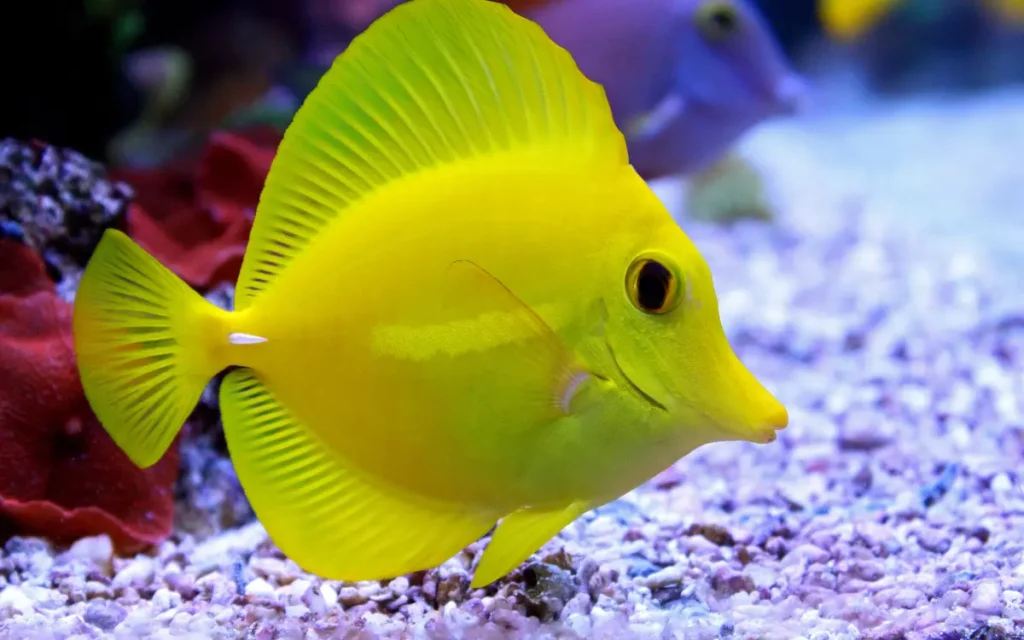
- Description: Bright yellow and highly active, Yellow Tangs are popular for their striking appearance.
- Care Level: Moderate; needs a spacious tank with plenty of swimming space.
4. Royal Gramma (Gramma loreto)
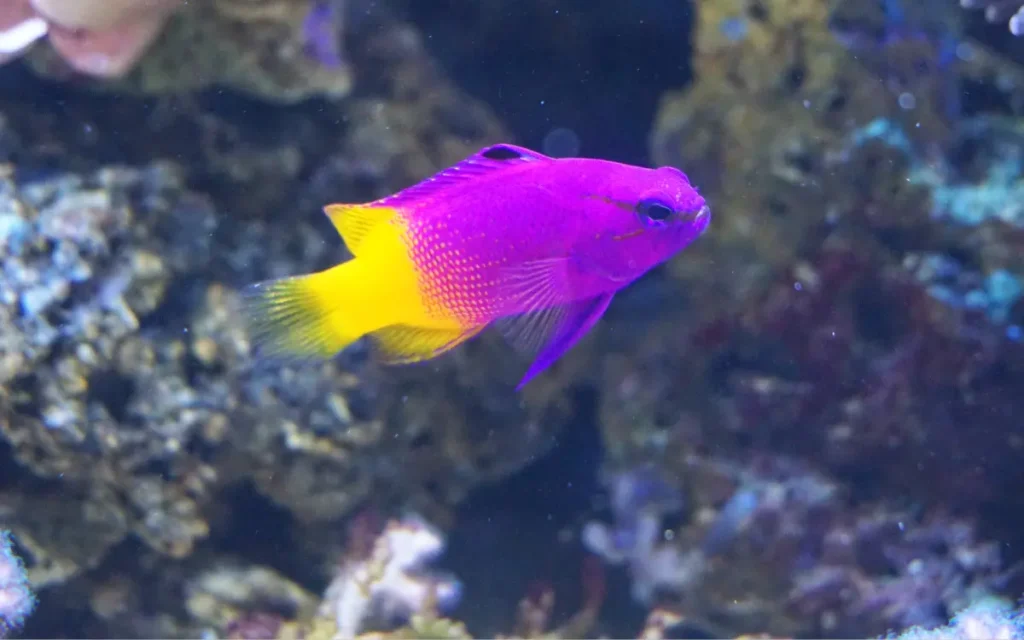
- Description: This small fish is known for its vibrant purple and yellow coloration.
- Care Level: Easy; peaceful and ideal for beginners.
5. Firefish Goby (Nemateleotris magnifica)
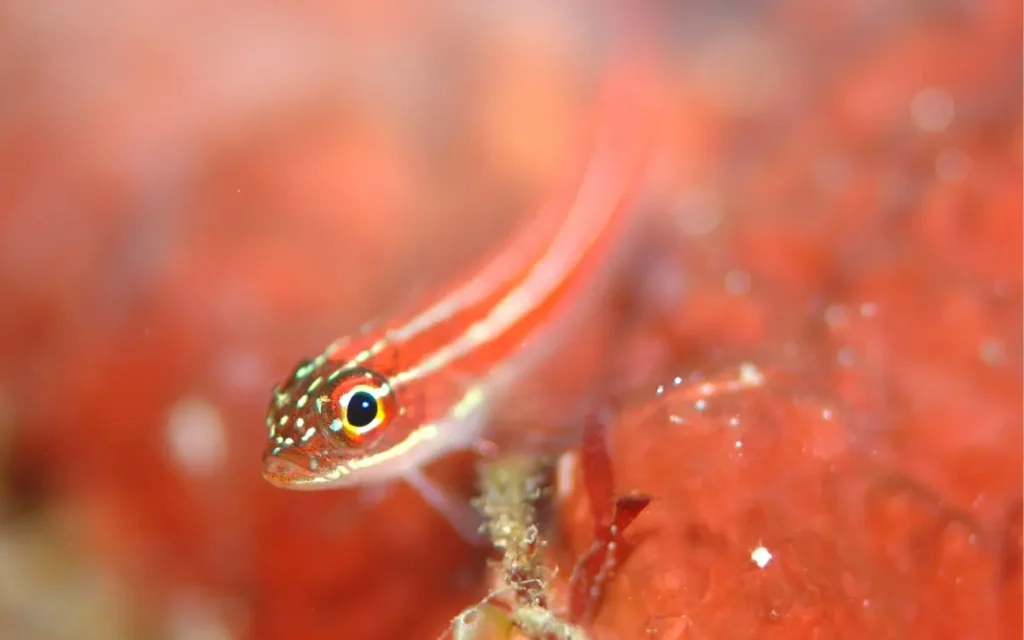
- Description: Recognizable by its slender body and vivid red-orange coloration.
- Care Level: Easy to Moderate; requires a covered tank as they are jumpers.
6. Dwarf Angelfish (Centropyge)
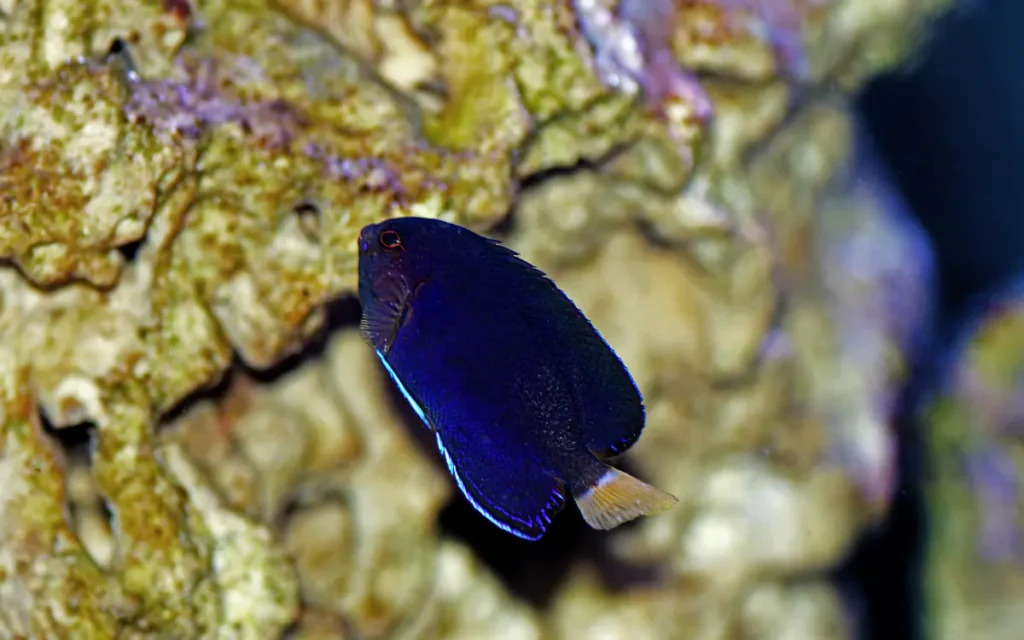
- Description: Small and colorful, with varieties like the Coral Beauty and Flame Angelfish.
- Care Level: Moderate; can be territorial.
7. Wrasses (Labridae)
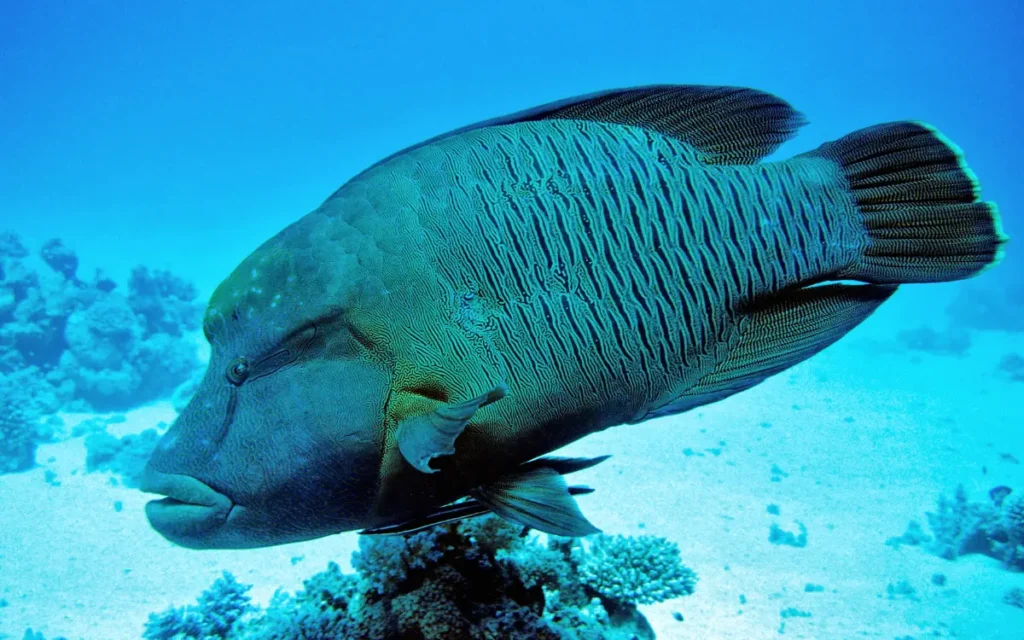
- Description: A diverse family with species like the Six-Line Wrasse and the Fairy Wrasse.
- Care Level: Varies by species; generally active and colorful.
8. Mandarin Fish (Synchiropus splendidus)
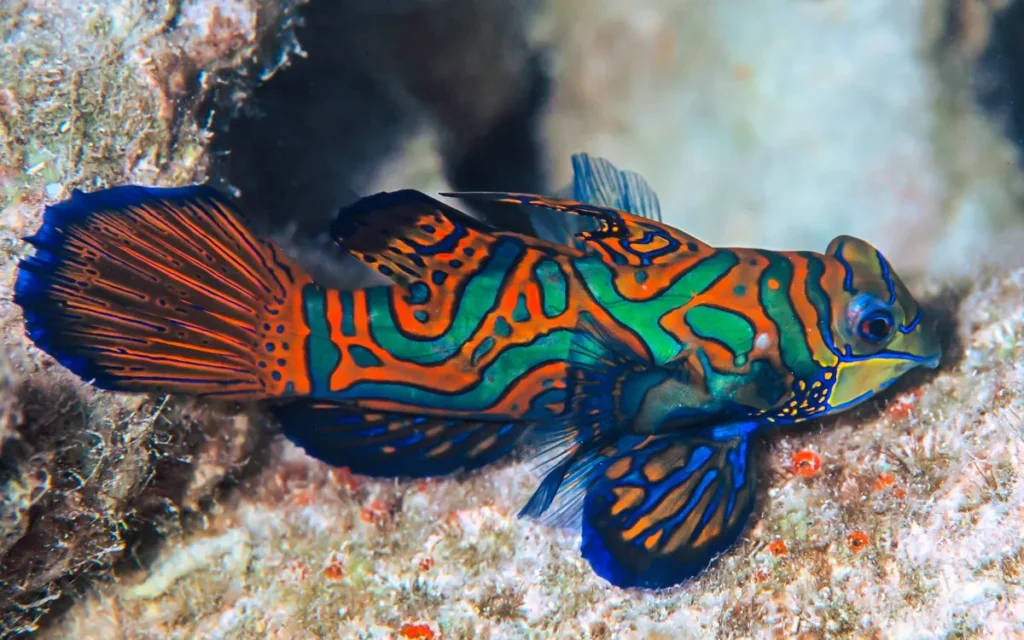
- Description: Known for their vibrant and intricate patterns.
- Care Level: Difficult; requires a well-established tank with plenty of live rock.
9. Gobies (Gobiidae)
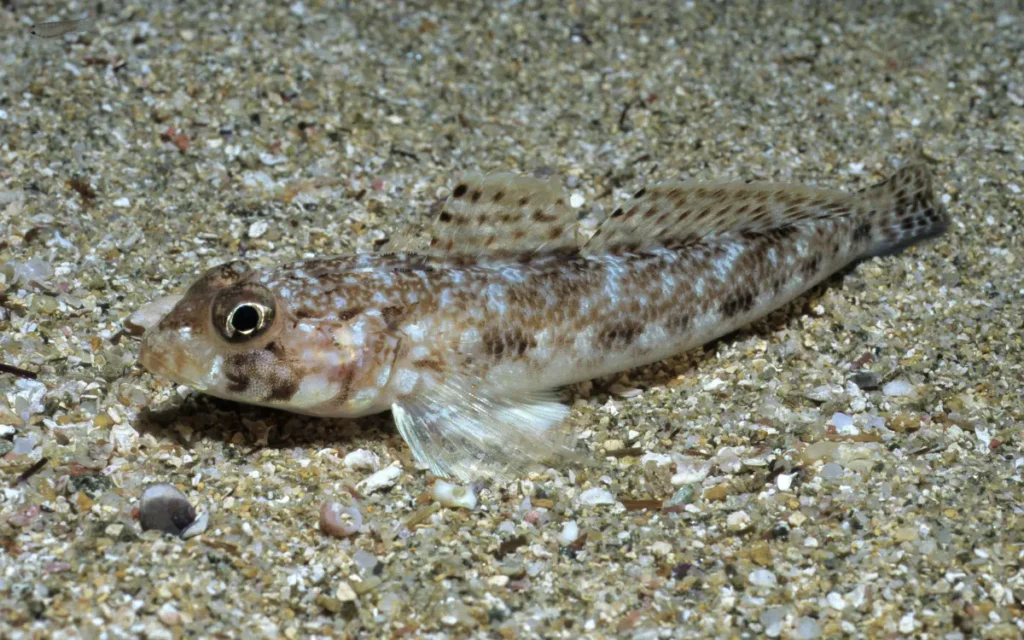
- Description: Small, bottom-dwelling fish with a variety of colors and patterns.
- Care Level: Easy to Moderate; peaceful and good for community tanks.
10. Cardinalfish (Apogonidae)
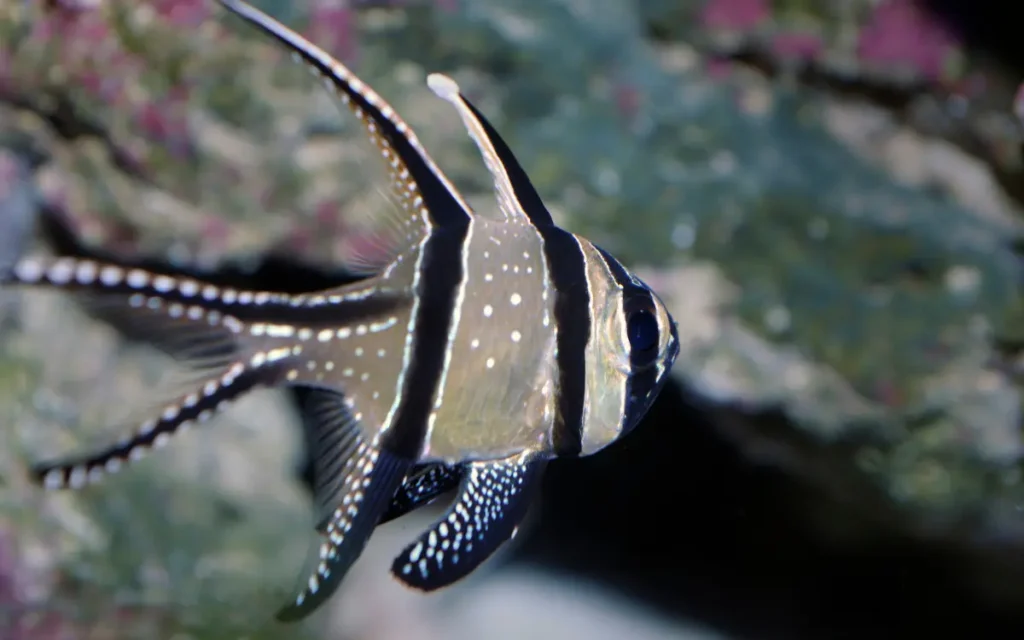
- Description: Peaceful fish that often display striking patterns and colors.
- Care Level: Easy to Moderate; suitable for beginners.
Compatibility and Community Planning
- Research Species: Understand the behavior, size, and environmental needs of each species.
- Avoid Aggressive Species: Some fish can be territorial or aggressive, such as certain Wrasses and Dwarf Angelfish.
- Consider Tank Size: Ensure your tank can accommodate the size and activity level of your chosen fish.
- Introduce Fish Gradually: Add fish slowly to allow the tank’s biological filtration to adjust.
- Quarantine New Additions: Quarantine new fish for at least two weeks to prevent introducing diseases.
- Observe Behavior: Monitor fish interactions to ensure compatibility and adjust as needed.
Tips for Selecting Healthy Fish
- Check for Clear Eyes: Healthy fish should have clear, bright eyes without cloudiness or bulging.
- Inspect Fins and Scales: Look for intact fins and smooth, unblemished scales. Avoid fish with torn fins or visible lesions.
- Active Swimming: Healthy fish are typically active and responsive, not lethargic or hiding constantly.
- Observe Breathing: Normal breathing should be steady and not labored. Rapid gill movement can indicate stress or illness.
- Quarantine Before Introduction: Always quarantine new fish in a separate tank for at least two weeks to monitor their health and prevent the spread of diseases to your main tank.
Saltwater Aquarium Stores
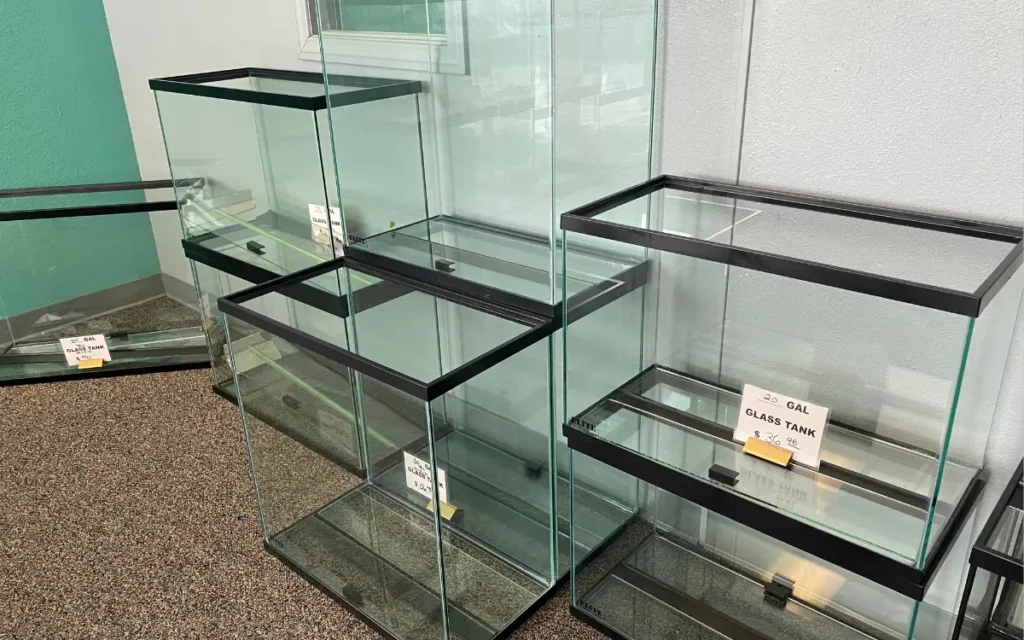
Finding Reputable Stores and Online Retailers
Local Stores:
- Aquarium Specialty Stores: Seek out stores that specialize in saltwater aquariums and have knowledgeable staff.
- Customer Reviews: Check online reviews and ratings on platforms like Google, Yelp, and aquarium forums to gauge the reputation of local stores.
- Aquarist Communities: Join local aquarist clubs or online communities to get recommendations from experienced hobbyists.
What to Look for in a Good Store
- Knowledgeable Staff: The staff should be well-informed about saltwater aquariums, able to answer questions, and offer advice on setup and maintenance.
- Healthy Livestock: Observe the health of the fish and corals. Look for active, vibrant, and disease-free specimens.
- Cleanliness: The store should be clean, with well-maintained tanks and clear water.
- Variety of Products: A good store should offer a wide range of products, including tanks, filtration systems, lighting, test kits, and supplements.
- Educational Resources: Availability of resources like books, pamphlets, and workshops on saltwater aquarium care.
- Customer Reviews: Positive reviews and testimonials from other customers indicating reliable service and quality products.
Supporting Local vs. Online Stores
Local Stores:
- Advantages:
- Personal Interaction: Direct interaction with knowledgeable staff who can offer tailored advice and support.
- Immediate Purchase: Ability to see and select livestock and equipment in person, ensuring quality and suitability.
- Community Support: Supporting local businesses helps strengthen the local economy and aquarist community.
- Quick Resolutions: Easier to handle issues like returns or exchanges in person.
- Disadvantages:
- Limited Selection: Smaller inventory compared to online retailers.
- Higher Prices: Prices may be higher due to overhead costs.
Online Stores:
- Advantages:
- Wide Selection: Access to a broader range of products and livestock not available locally.
- Competitive Pricing: Often more competitive prices due to lower overhead costs.
- Convenience: Easy to shop from home and have products delivered directly.
- Reviews and Comparisons: Ability to read detailed reviews and compare products easily.
- Disadvantages:
- Shipping Risks: Potential risks with shipping live animals, including stress and potential loss.
- Lack of Personal Interaction: No face-to-face interaction with staff, which can be crucial for personalized advice.
- Delayed Resolutions: Handling issues or returns can be more complex and time-consuming.
For a balanced approach, consider using both local and online stores. Purchase common items and livestock locally, while sourcing specialized equipment and rare species from reputable online retailers. This way, you can enjoy the best of both worlds and ensure the success of your saltwater aquarium.
Saltwater Fish Tanks for Sale
Overview of Different Tanks Available for Purchase
1. Standard Glass Tanks:
- Description: Traditional aquariums made of glass, available in various sizes from small nano tanks to large display tanks.
- Pros: Clear visibility, scratch-resistant, widely available.
- Cons: Heavier than acrylic tanks, more prone to breaking.
2. Acrylic Tanks:
- Description: Tanks made of acrylic material, known for their lightweight and durability.
- Pros: Lighter than glass, impact-resistant, can be shaped into unique designs.
- Cons: More expensive, can scratch easily.
3. All-in-One (AIO) Tanks:
- Description: Integrated systems that include filtration, lighting, and other necessary equipment.
- Pros: Convenient, beginner-friendly, streamlined setup.
- Cons: Limited customization, may be more expensive initially.
4. Nano Tanks:
- Description: Small tanks typically under 30 gallons, ideal for limited spaces.
- Pros: Compact, lower cost, suitable for small fish or reef setups.
- Cons: Limited space for fish and equipment, more challenging to maintain stable water parameters.
5. Reef-Ready Tanks:
- Description: Tanks designed specifically for reef setups, often pre-drilled for sump systems.
- Pros: Designed for advanced filtration and equipment, ideal for coral enthusiasts.
- Cons: More expensive, requires additional equipment like sumps and protein skimmers.
6. Custom-Built Tanks:
- Description: Tailor-made tanks to fit specific dimensions and design preferences.
- Pros: Fully customizable, can accommodate unique spaces and designs.
- Cons: Higher cost, longer wait times for construction and delivery.
Considerations for Choosing the Right Tank
- Size: Determine the appropriate size based on available space, budget, and the type of fish and corals you plan to keep. Larger tanks offer more stability and room for aquascaping but require more maintenance.
- Material: Choose between glass and acrylic based on your preference for clarity, weight, and durability. Glass is more scratch-resistant, while acrylic is lighter and less prone to breaking.
- Filtration Needs: Consider if you prefer an all-in-one system with integrated filtration or a traditional tank with a separate filtration setup. AIO tanks are convenient but offer less flexibility.
- Budget: Set a budget for your tank and related equipment. Remember to factor in the costs of additional equipment, livestock, and ongoing maintenance.
- Purpose: Decide if you want a fish-only, FOWLR (Fish Only with Live Rock), or reef tank. Reef tanks require more advanced equipment and care but offer a more diverse and vibrant display.
- Aesthetic Preferences: Consider the tank’s design, such as rimless, bow-front, or custom shapes, to fit your aesthetic preferences and home decor.
- Future Expansion: Think about whether you may want to upgrade or expand your setup in the future. Starting with a larger tank or a modular system can provide more flexibility.
Price Ranges and Quality
- Standard Glass Tanks:
- Price Range: $50 to $300 for common sizes (20 to 75 gallons).
- Quality: Generally good quality; brands like Aqueon and Marineland offer reliable options.
- Acrylic Tanks:
- Price Range: $200 to $1,000+ depending on size and design.
- Quality: High quality, with brands like SeaClear and Red Sea providing durable and well-crafted tanks.
- All-in-One (AIO) Tanks:
- Price Range: $150 to $800 for popular models (10 to 40 gallons).
- Quality: Good quality; top brands include Innovative Marine and Fluval, known for their comprehensive and user-friendly designs.
- Nano Tanks:
- Price Range: $50 to $300 for tanks under 30 gallons.
- Quality: Varies, with reputable brands like BioCube and JBJ offering quality nano setups.
- Reef-Ready Tanks:
- Price Range: $300 to $1,500+ depending on size and features.
- Quality: High quality, with brands like Red Sea and Waterbox specializing in reef-ready systems.
- Custom-Built Tanks:
- Price Range: $1,000 to $10,000+ depending on size, materials, and customization.
- Quality: Excellent quality from specialized manufacturers who offer bespoke designs tailored to individual preferences.
Frequently Asked Questions
How Expensive is a Saltwater Aquarium?
Breakdown of Initial and Ongoing Costs:
Initial Costs:
- Tank: $50 to $1,000+ depending on size and type.
- Filtration System: $50 to $300 for basic setups; $300 to $1,000+ for advanced systems.
- Lighting: $50 to $500 for basic lights; $500 to $1,500+ for high-end LED systems.
- Substrate: $20 to $100 for sand or gravel.
- Live Rock: $5 to $10 per pound; typically need 1-2 pounds per gallon.
- Water Testing Kits: $20 to $50.
- Salt Mix: $20 to $70 per bucket (makes 150-200 gallons of saltwater).
- Heater: $20 to $100.
- Protein Skimmer: $100 to $400.
- Powerheads: $20 to $100 each.
- Initial Livestock: $50 to $300 for fish and corals.
Ongoing Costs:
- Salt Mix: $20 to $70 per bucket (replenish as needed).
- Replacement Filters: $10 to $50 per month.
- Electricity: Varies, typically $10 to $30 per month.
- Food: $10 to $50 per month.
- Water Tests and Supplements: $10 to $30 per month.
- Medication and Treatments: As needed, typically $10 to $50 per month.
Overall, the initial setup for a basic saltwater aquarium can range from $500 to $2,000+, with monthly maintenance costs ranging from $50 to $150+.
Are Saltwater Aquariums Hard to Maintain?
Challenges and How to Overcome Them:
- Water Quality: Maintaining stable water parameters is crucial. Use high-quality testing kits and monitor regularly.
- Solution: Regular water changes (10-20% weekly), use RO/DI water, and invest in a good filtration system.
- Algae Growth: Excess nutrients can lead to algae blooms.
- Solution: Control feeding, use phosphate removers, and maintain a good clean-up crew (snails, crabs).
- Disease: Saltwater fish are susceptible to diseases like ich.
- Solution: Quarantine new fish, maintain good water quality, and use UV sterilizers if needed.
- Equipment Maintenance: Regular cleaning and maintenance of equipment are necessary.
- Solution: Schedule regular maintenance tasks and keep spare parts on hand.
- Cost: Saltwater aquariums can be expensive.
- Solution: Budget for both initial setup and ongoing maintenance and consider starting with a smaller tank.
What Type of Tank is Best for Saltwater?
Recommendations Based on Different Needs and Preferences:
- Beginners:
- Recommendation: All-in-one (AIO) tanks like the Biocube or Fluval Evo for ease of setup and maintenance.
- Budget-Conscious:
- Recommendation: Standard glass tanks with a basic filtration setup; look for used equipment to save money.
- Reef Enthusiasts:
- Recommendation: Reef-ready tanks with advanced lighting and filtration systems from brands like Red Sea or Waterbox.
- Limited Space:
- Recommendation: Nano tanks (10-30 gallons) for smaller spaces; ideal for offices or apartments.
- Experienced Aquarists:
- Recommendation: Custom-built tanks for personalized setups, allowing for unique designs and specific needs.
Conclusion
Saltwater aquariums offer a vibrant and diverse underwater world that can be incredibly rewarding for hobbyists. While the initial setup and ongoing maintenance may seem daunting, proper planning and regular care can ensure a thriving marine ecosystem in your home. Whether you opt for a reef aquarium, a fish-only tank, or a fish-only with live rock (FOWLR) setup, the beauty and complexity of saltwater aquariums make them a fascinating hobby.
If you’re interested in exploring another type of aquarium, consider looking into freshwater aquariums. Freshwater setups offer a different set of challenges and rewards, often with lower costs and maintenance. For more information, check out our detailed guide on freshwater aquariums, covering topics such as setup, popular species, and maintenance tips.
By comparing both saltwater and freshwater aquariums, you can find the perfect aquatic environment that suits your interests and lifestyle. Happy aquascaping!

